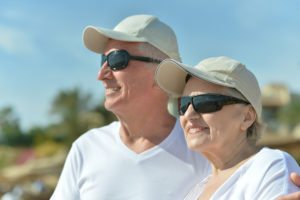
This July 4, will all the smoke be coming from the barbecue grill and from the fireworks high overhead? Or will you be seeking out a spot to have a cigarette during the festivities? Every year, over a million Americans are successfully able to “kick the habit” and quit smoking.
You’ve heard the statistics. Cigarette smoking increases the risk of lung cancer and other cancers, heart disease, stroke, emphysema and a host of other health problems. Smoking is also linked to many thousands of deaths every year. Second-hand smoke harms the health of family members and others who spend time around a smoker. Smoking is expensive and, increasingly, inconvenient. Gone are the days when there was a smoking car on every commuter train and smoke-filled Mad Men-style offices, equipped with ashtrays at every desk.
There’s no question that quitting can be a challenge. The Centers for Disease Control and Prevention (CDC) points out that cigarettes are designed to cause addiction. Like heroin or cocaine, nicotine changes the way the brain works and causes smokers to crave more and more nicotine. But smokers can and do beat nicotine addiction. Some do it alone, going “cold turkey”—but if that seems daunting, take advantage of these resources that can help:
Support groups and counseling. The CDC says people who have support—from family, friends or smoking cessation groups—are more successful than those who go it alone. Do you have friends or coworkers who also want to quit? Form a “buddy system” for encouragement and support. Ask your doctor about a quit-smoking class, or you can find one through the American Cancer Society, American Lung Association or American Heart Association.
Nicotine replacement therapies such as nicotine gum, inhalers, nasal sprays, lozenges or patches can help control the urge to smoke. Talk to your doctor about the form that’s best for you. It is important to follow the instructions carefully for best results and to avoid side effects.
Non-nicotine prescription medications may also be prescribed to cut down cravings and lessen withdrawal symptoms.
The CDC says that a combination of medication and counseling has been found to be more effective than either alone. And sometimes we just need to change the way we think about smoking! Here are some tips from people who successfully kicked the habit:
- Set a date to quit, and stick to it.
- Choose a time period when you will be busy but not stressed.
- Change your habits. If you usually have a cigarette during your coffee break, go for a walk instead.
- Get rid of your cigarettes and ashtrays at home, at work and in your car.
- Tell people that you’re trying to quit; their support and understanding can help. (Ex-smokers may especially be able to commiserate with you.)
- Try to figure out why you smoke, so you’re aware of situations that could cause you to start again.
- Figure out the amount of money you spend per year on cigarettes. You may be surprised how much you’ll save!
- Drink lots of water to flush the nicotine from your system.
- Get plenty of exercise.
- If you slip up, start again.
Try to figure out which situations tempt you to smoke, and stay out of settings where you might be tempted to have “just one.” Some common triggers for relapsing include being around people who are smoking; stress and depression; and consuming alcoholic beverages.
Remember: When you quit smoking, the benefits start right away! According to the American Heart Association, after three years your risk of heart attack returns to the same as a person who never smoked. And as your lungs heal, your risk of lung cancer drops, as well.
For more information, call the CDC’s “quitline,” 1-800-QUIT NOW (1-800-784-8669), or visit www.smokefree.gov.


